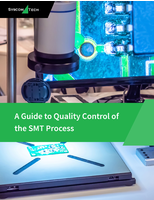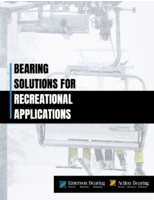Turning Inserts handle difficult machining applications.
Press Release Summary:

Designed for semi-finishing and medium machining of high temperature alloys, NMS geometry can also be used on ISO M materials. NRS geometry is suitable for roughing high temperature alloys and for machining of forged and cast surfaces. For finishing titanium alloys, NFT geometry is resistant to crater wear. NRR geometry is suited for heavy roughing of forged materials, with cut depths of up to 0.700 in., and RP5 geometry features positive 3° chamfer for roughing with low power requirements.
Original Press Release:
New Inserts from Walter Boost Productivity in a Wide Range of Tough Turning Applications
New geometries bring production efficiencies for turning high temperature alloys, titanium machining and tough roughing jobs.
Waukesha, WI –Walter has announced a series of new insert geometries for turning that bring higher levels of productivity to a range of difficult applications. These include: the Walter NMS and NRS geometries for high temperature alloys such as Inconel 718 and Waspaloy, commonly used in the aerospace industry; NFT geometry for titanium alloys; and the NRR and RP5 to boost the productivity of difficult steel and iron roughing operations.
The NMS geometry is designed for semi-finishing and medium machining high temperature alloys, but can also be used on ISO M materials, such as type 304/316 austenitic stainless steels. NRS geometry is suitable for roughing high temperature alloys and for the machining of forged and cast surfaces. Thanks to their advanced coatings (either WSM10 or WSM20) and unique cutting edge geometry, they resist the formation of notches and cutting edge build-up, the main sign of wear when machining high temperature alloys. They also generate less heat, resulting in tool life increases of up to 150%.
Walter’s new NFT geometry, designed for finishing titanium alloys, is highly resistant to the crater wear that is common in titanium machining, and it features a fully ground periphery for high accuracy. Typical applications include finishing aerospace engine components such as rings and fittings.
The NRR geometry is ideally suited for heavy roughing of forged materials, with high feed rates and cut depths of up to 0.700” (18 mm). It easily handles variable material removal and “first pass” machining. Typical applications include the machining of generator shafts and marine engine crankshafts.
The RP5 geometry features a stable, positive 3 degree chamfer for roughing with low power requirements. Its open groove design produces low cutting temperature and reduces wear in comparison to other geometries. It also has a wider chamfer in the range of the cut depth to prevent notching in the machining of forging and casting skins.
Walter offers an extensive line up of cutting tools for milling, drilling, turning, boring and specialized tooling for unique applications through its competence brands Walter Valenite, Walter Titex and Walter Prototyp. As well as multi-level service programs through its Walter Multiply brand. Headquartered in Waukesha, Wisconsin the company has a strong network of distributors and field engineers across their subsidiaries in the USA, Canada, Mexico, Brazil and Argentina. The Walter name is synonymous with productivity, thanks to more than 90 years of developing cutting tools and inserts that set new standards in quality, innovation and production.




